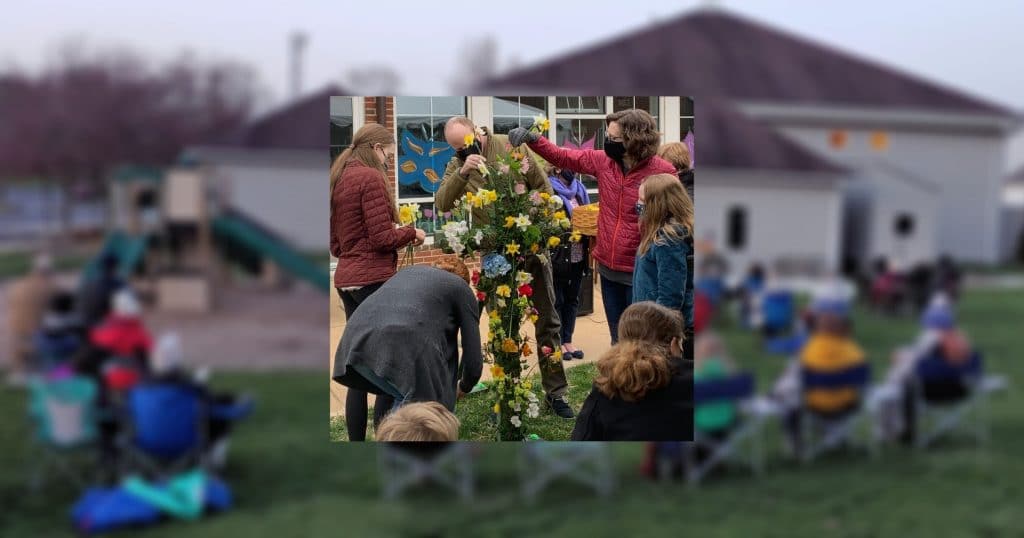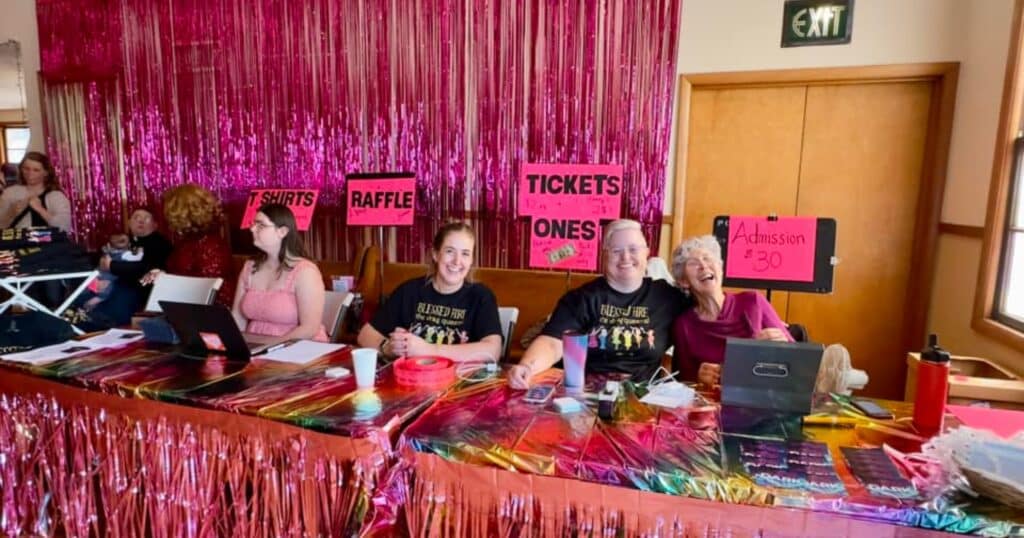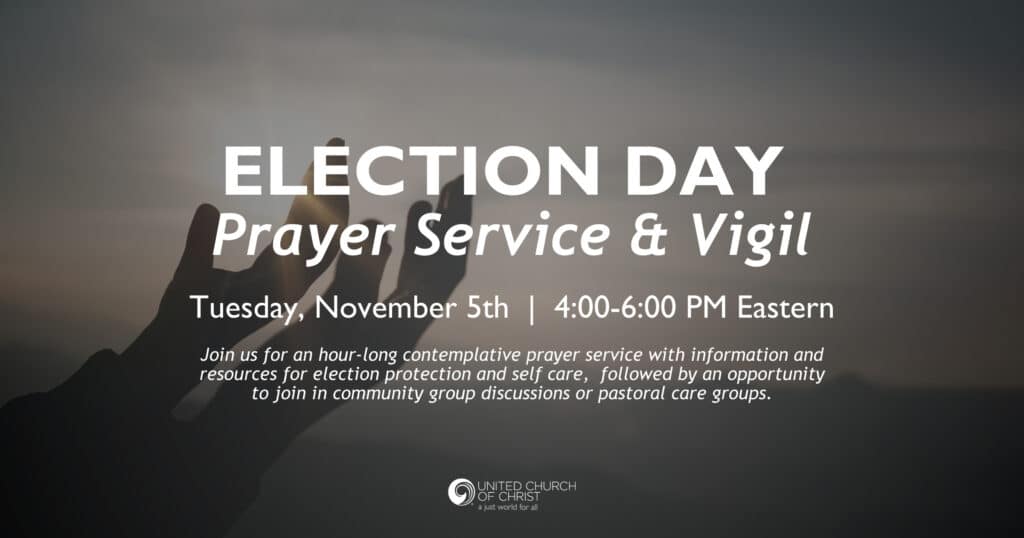Churches vary in approach to 2nd COVID Easter, but agree changes will last
This year, United Church of Christ congregations marked Holy Week and Easter online, outdoors and, in some cases, both.
Some even returned to indoor worship with masks, limited seating and other health precautions in place.
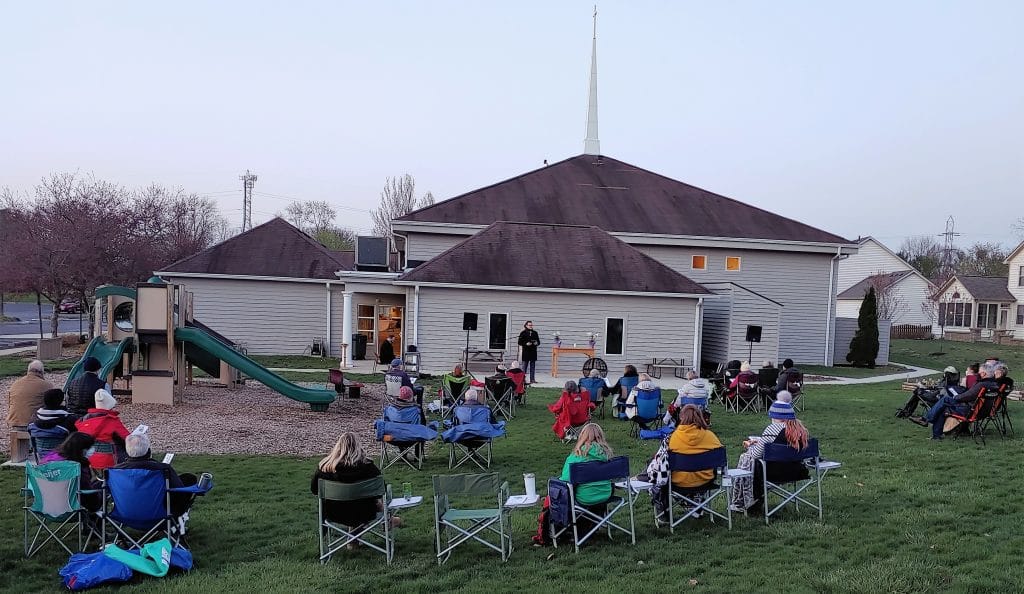
Indeed, U.S. worshipers seem increasingly interested in gathering in person, with COVID-19 vaccinations on the rise and fewer people dying. A March survey by the Pew Research Center found optimism among regular worshipers about gathering safely. But coronavirus variants and surging infection rates are also in the news — and the survey showed most worshipers planned to stay home on Easter.
Here are the approaches taken by three UCC churches this past week. Whatever their current answers to the question of in-person worship, all say they’ve made changes over the past year that will last beyond COVID-19.
As the Rev. Kathryn Dwyer, senior pastor of Rock Spring Congregational UCC in Arlington, Va., put it: “The pandemic has forced us to embrace technology in ways we may never have done without it being a necessity. That has been a gift during this time. As our Strategic Planning Team is thinking about our vision of ministry over the next several years, we are wrestling with how we will be using technology whenever we return to in person worship and programming.”
Grief, growth between two Easters
At Rock Spring, grief and growth have both been part of the past year.
“Our congregation has lost several members to COVID and have many more who have suffered with it or who have people close to them whom they have lost to the disease,” Dwyer said. “Many of our members grieve not being able to see their grandchildren or gather with friends. Parents and youth have struggled with working and going to school from home. We can’t talk about the effects of this past year without acknowledging all of this loss and difficulty.
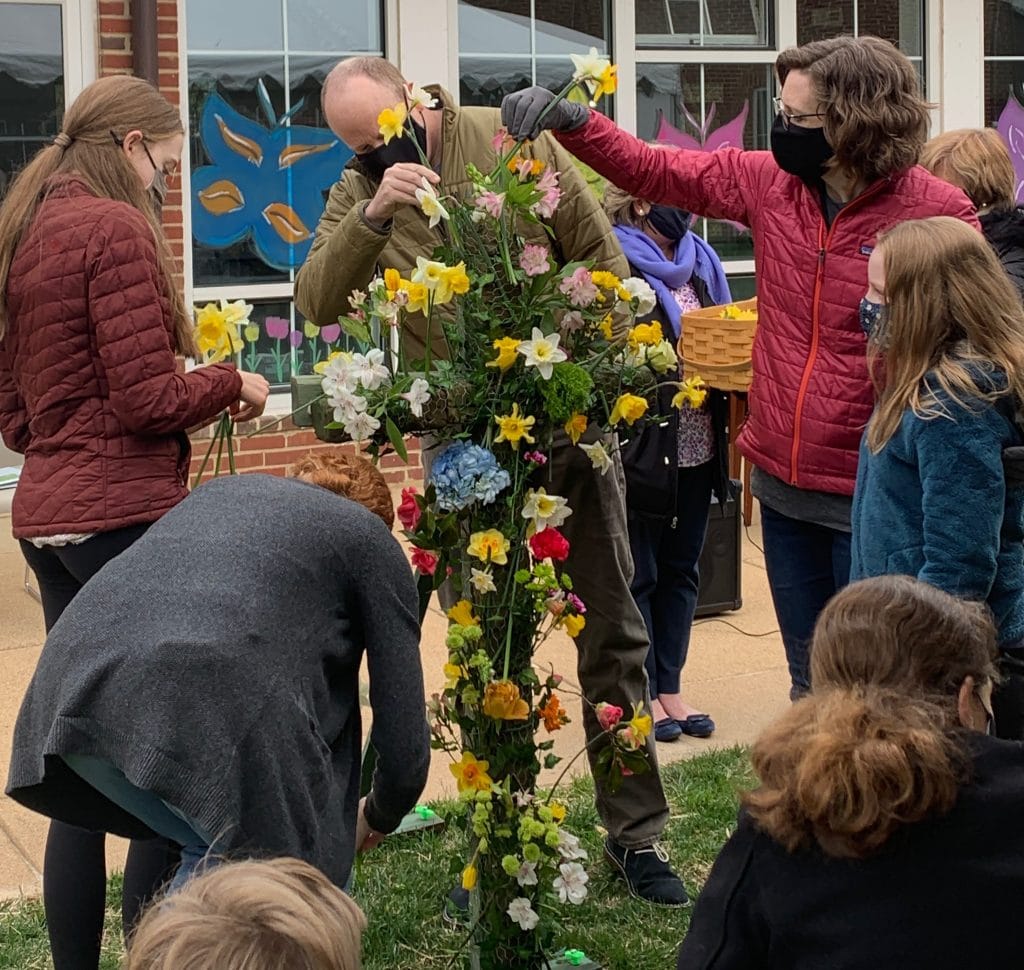
“At the same time, we hear that there are some members who feel more connected to the church. Part of this is because our lay members have expanded the outreach and care they are giving to one another. From weekly phone calls and handwritten notes to homemade bread deliveries, there are many ways our members are caring for one another.”
The church has grown in its use of technology — and from it: New members have joined from as far away as Ohio and England, and a person from Africa has attended a few Bible studies. “While some people suffer from ‘Zoom fatigue,’ Zoom has enabled others to participate who have not been able to do so before,” Dwyer said.
Year of improved video skills
Getting better at online worship made a difference at Rock Spring between the Holy Weeks of 2020 and 2021.
The church was already live-streaming worship before the pandemic. But after closing its campus and going totally online as of March 15, 2020, “we immediately set to work on developing the skills to create a more intimate and higher quality video experience for worship,” Dwyer said. “My husband, Dale, has always coordinated our A/V team; this past year he has become so integral to our production that he has become a volunteer member of our staff team and is included in all staff communication about worship.”
All of that was reflected last week. Rock Spring’s main Easter service included virtual choirs and a children’s moment called “the ABC’s of Easter” — a video compilation featuring contributions by 26 members. Maundy Thursday and Good Friday worship were also online. The latter featured video of members reading scripture at a homeless shelter, a school and other community sites.
Also on Easter Sunday, three brief, in-person outdoor sunrise services took place under a tent at 7, 7:45 and 8:30 a.m. They included dramatic readings, instrumental music and prayers. A limit of 30 worshipers could attend each service, by reservation only. They affixed blossoms to a “flowering cross.” There were no bulletins, no singing, no passing of the peace.
‘A very conservative approach’
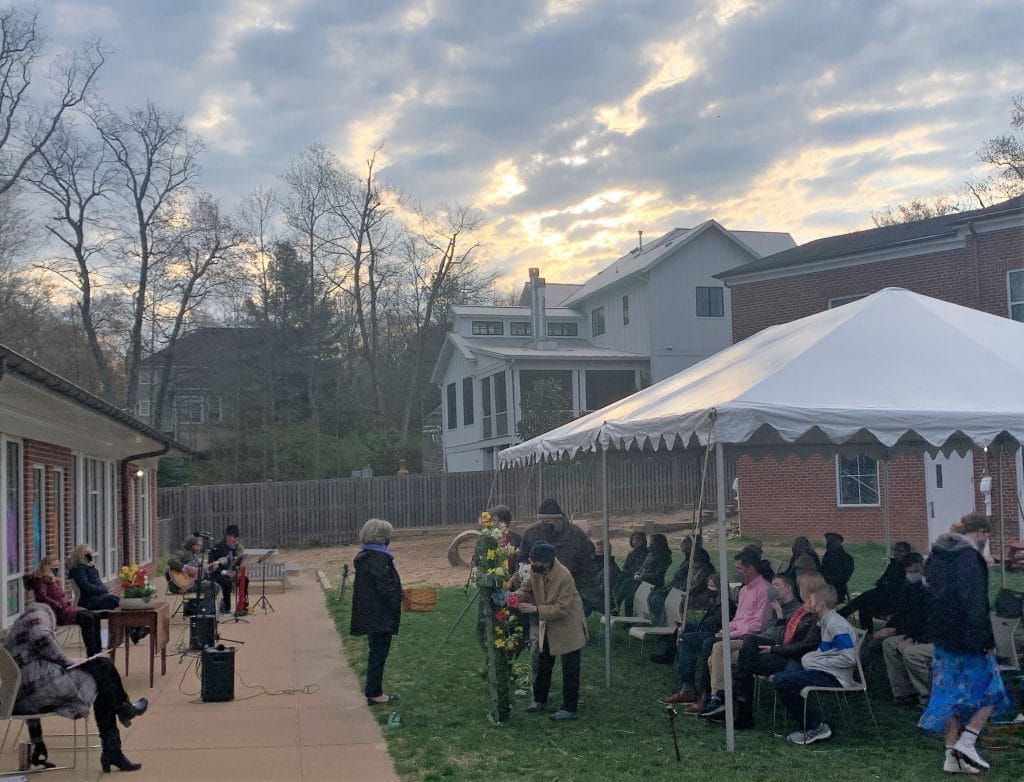
And Rock Spring is in no hurry to return to in-person worship indoors. Its church council decided in October not to do so any sooner than Memorial Day 2021. “We are just now beginning to think about what will happen following Memorial Day,” Dwyer said.
“Last spring we conducted a congregational survey to understand what our membership felt was needed to reopen, what they needed spiritually, and what might help them nurture their connection to one another and the congregation. Their response affirmed our decision to take a very conservative approach.
“Since then we have had a task force composed of several lay leaders who make recommendations about what activities can take place on the campus as well as protocols that must be followed. This group makes recommendations to our council who then have relayed these decisions and updates to the congregation.”
A cautious in-person return
One congregation that is now back to worshiping in person — in limited ways — is Westerville Community UCC in suburban Columbus, Ohio. It opened its sanctuary on Good Friday and Easter for the first time since the pandemic’s onset.
Its weekly email to 625 members and friends on March 31 included a special explanatory video. For those who, by advance reservation, would come to worship at 8:30 or 10:45 a.m. on Easter Sunday, it described what to expect. Among other measures, worshipers must:
- Wear masks
- Keep physically distant from others
- Pick up Communion elements on the way in
Westerville also offered an outdoor service, to which worshipers brought their own lawn chairs.
This cautious return to in-person gatherings was by vote of the church council, said Westerville’s pastor, the Rev. Sigrid Rother.
Staying home still an option
People can also still opt to join Westerville worship from home. And, thanks to investments made during the pandemic, their experience may be better than it used to be, Rother said. Before COVID, the church had streamed just one of its two Sunday services. Now it streams both, as well as any special ones that take place during the week.
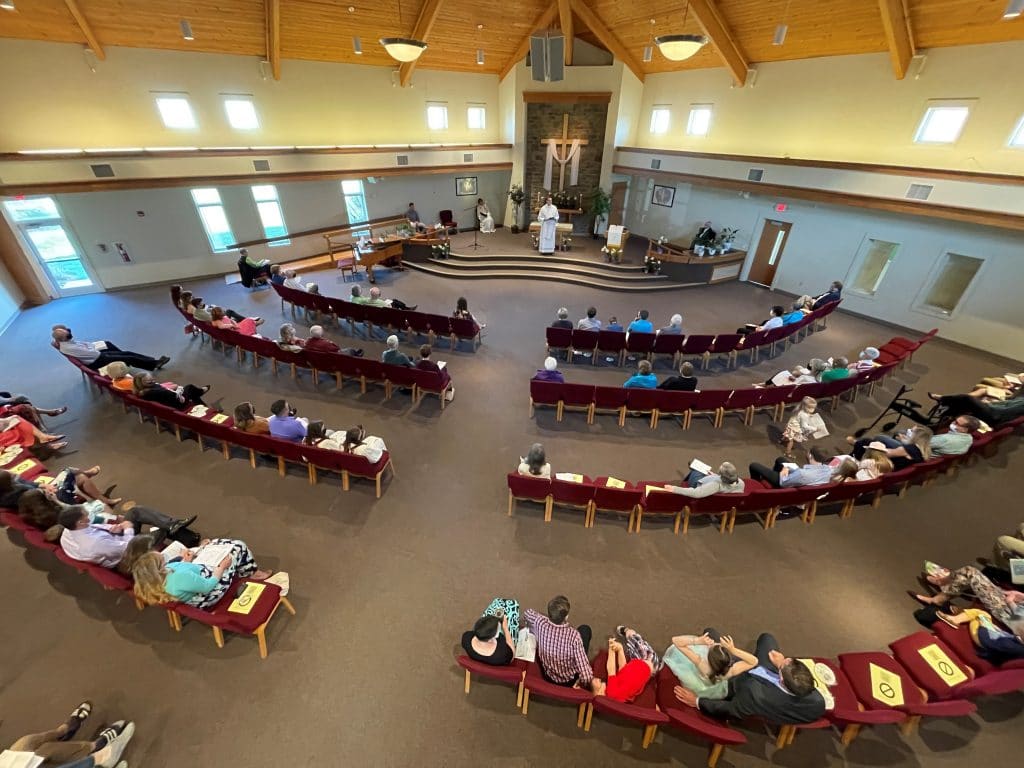
“We upgraded our cameras and sound system so that people have a better experience worshiping with us at home,” she said. “Instead of a balcony shot, we now have special cameras to give the feeling as if you are present, sitting in the first row.”
The improved equipment, plus updated internet service, results in “much better quality” via the church’s Facebook and YouTube channels, she said.
Increased outreach
Better tech wasn’t the only change COVID brought to the church. It also brought community needs — and the congregation responded.
Over the past year, Rother said, the church:
- Increased its blood drives from quarterly to weekly
- Did more frequent food drives, and added a coat collection
- Began supporting The Largest Table, a weekly hot meal program at St. John’s UCC, Columbus
- Supported a local food pantry with a special virtual Christmas concert
- Made a special contribution to summer camps because they were shut down due to COVID
- Welcomed a weekday YMCA before- and after-school program to its building last fall “because the elementary schools were closed and parents needed safe and affordable supervision for their children,” Rother said. With the church’s improved internet, “kids did online school during regular school hours as well.”
Strong connections
It also kept up initiatives that were already underway — it competed the process of becoming Open and Affirming — and strengthened its internal connections.
‘More people are involved in the life and work of the church than were before COVID.’
The Rev. Sigrid Rother, Westerville (Ohio) Community UCC
“We expanded our congregational care,” Rother said. “In addition to 12 deacons, we also have deacon helpers who connect on a regular basis with members of the church and make sure that all feel cared for. We increased our weekly email communications to twice a week.
“Overall I believe more people are engaged in the life and work of the church than were before COVID. We always were an active church, but now it seems even more.”
‘An abrupt shift’
Plymouth Congregational UCC, Syracuse, N.Y., has also experienced both challenges and vitality during the pandemic, said its pastor, the Rev. Eric Jackson.
“It was an abrupt shift that required us to do church in a radically different way than what we were used to,” Jackson said. “We switched to online worship with occasional outdoor worship services.
“I don’t envision churches thriving without a long-term hybrid model in place.”
The Rev. Eric Jackson, Plymouth Congregational UCC, Syracuse, N.Y.
“It is painful not to be able to visit my parishioners in person in times of need. We are a ‘sticky’ congregation that values our community.” Being limited to online gatherings, he said, “makes spontaneous communication harder in moments where it would naturally take place, such as coffee hour.”
‘We can be the church anywhere’
For Holy Week this year, the congregation opened its sanctuary only for three socially distanced opportunities for meditation, accompanied by organ music. Otherwise, the congregation plans to return to in-person gatherings sometime “this year,” Jackson said. And when it does, it will keep an online component — something it didn’t have before COVID. “I don’t envision churches being able to thrive without a long-term hybrid model in place,” he said.
Plymouth’s food pantry has remained open during the pandemic, Jackson said, and “we still continue to show up for nonviolent direct action” when urgent causes arise.
COVID-19 “showed us that we can be the church anywhere,” Jackson said. “Church doesn’t stop because of a pandemic.”
Related News
‘Blessed Are the Drag Queens’: Oregon church event celebrates love and acceptance
Amid harmful anti-trans and nonbinary legislation and political messaging, Bridgeport United...
Read MoreUCC to offer Election Day Prayer Service and Vigil
On Election Day, Nov. 5, join the Rev. Karen Georgia A. Thompson together with United Church...
Read MoreGoing beyond the blessing: Churches emulate St. Francis’ care for animals
https://www.youtube.com/watch?v=lu3LYwhLxCo UCC News presents a video news story on the...
Read More